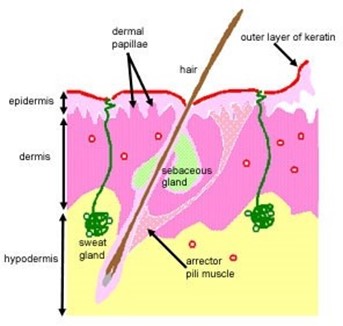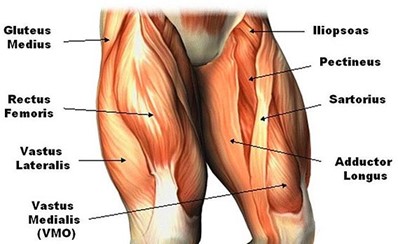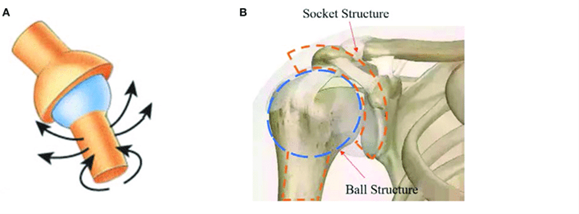Which skin structures are responsible for fingerprints?
Sudoriferous glands
Dermal papillae
Merkel cells
Arrector pili
The Correct Answer is B
Dermal papillae are small, raised structures in the dermis of the skin. They contain nerve endings, capillaries, and other specialized cells. Dermal papillae are responsible for creating fingerprints, as they push up into the epidermis and create ridges on the surface of the skin. These ridges are what give each person their unique pattern of fingerprints. Sudoriferous glands are responsible for producing sweat, Merkel cells are involved in touch sensation, and arrector pili are responsible for the contraction of hair follicles

Nursing Test Bank
Naxlex Comprehensive Predictor Exams
Related Questions
Correct Answer is D
Explanation
The quadriceps femoris group is a group of four muscles located in the anterior compartment of the thigh. These muscles are responsible for extending the leg at the knee joint. The four muscles that make up the quadriceps femoris group are the rectus femoris, vastus medialis, vastus intermedius, and vastus lateralis.
The vastus lateralis is the largest of the four muscles and is located on the lateral side of the thigh. It originates from the greater trochanter of the femur, the lateral lip of the linea aspera, and the lateral intermuscular septum. It inserts into the patella and the tibial tuberosity via the patellar tendon. The vastus lateralis is responsible for extending the leg at the knee joint and is also involved in stabilizing the patella.

Correct Answer is D
Explanation
A ball and socket joint is a type of synovial joint where the rounded head of one bone fits into the concave socket of another bone, allowing movement in multiple directions. The shoulder joint is a classic example of a ball and socket joint, where the rounded head of the humerus bone fits into the shallow socket of the scapula bone, allowing for a wide range of movements such as flexion, extension, abduction, adduction, and rotation. The ankle joint is a hinge joint, the elbow joint is a hinge joint, and the knee joint is a complex hinge joint.

Whether you are a student looking to ace your exams or a practicing nurse seeking to enhance your expertise , our nursing education contents will empower you with the confidence and competence to make a difference in the lives of patients and become a respected leader in the healthcare field.
Visit Naxlex, invest in your future and unlock endless possibilities with our unparalleled nursing education contents today
Report Wrong Answer on the Current Question
Do you disagree with the answer? If yes, what is your expected answer? Explain.
Kindly be descriptive with the issue you are facing.
